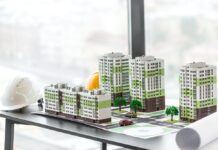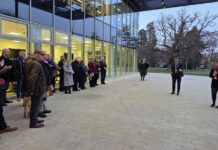
By Alasdair Rankin, managing director, Aitken Turnbull Architects
Recently, I read an article about how academic innovation was helping to spearhead a transition to reduce waste in the construction industry. The company that caught my eye was Kenoteq, a pioneering Edinburgh-based spinout from Heriot Watt University that takes construction industry waste (think rubble!!) and turns it into building bricks.
It was clearly borne out of extensive research and innovation, and it got me thinking about how critically important this element of promoting circular economy initiatives has to be for our net zero aspirations and not least, how architects and designers can fulfil a vital role in maintaining the momentum.
Globally, we use the equivalent of 1.6 Earths a year to provide the resources we use and absorb our waste. This means it takes the planet one year and eight months to regenerate what we use in a single year. Very much like running up financial debts, when we draw down too much resource from our natural environment without ensuring and encouraging its recovery, we run the risk of local, regional, and eventually global ecosystem collapse.
The risk of impacting the economy is frequently used as a reason to delay or reduce commitment to necessary environmental change. The circular economy decouples economic growth from the consumption of finite resources removing this excuse.
Like Kenoteq, and many others, this is about redesigning products, services, and the way our businesses work to shift our whole economy from one that is locked into a take-make-waste cycle to one that eliminates waste, circulates products and materials, and respects our environment.
For architects and designers, the future needs to be about embracing these changes and upskilling our workforce to continue to challenge the currently accepted practices.
Architects and designers have a privileged position in the industry, taking projects from conception to completion. We are uniquely placed to influence everything from the selection of sites to the design and specification of products.
We can advise, and hopefully inspire, clients through the journey to look not just to minimal standards but to embrace the wider opportunities for engaging with the circular economy in everything from the adaptive reuse of buildings to the disposal and redistribution of furniture and assets from their existing or former properties.
We need to embrace the circular economy to achieve net-zero. While something like 55% of emissions can be tackled by the transition to renewable energy, the remaining 45% of greenhouse gas emissions come from the way we make and use products and food and manage land.
To deliver the climate and biodiversity benefits of a circular economy, businesses and governments must work together to change the system, and this means redesigning the way we live and work. This shift will give us the power to not only reduce waste, pollution, and greenhouse gas emissions but also to grow prosperity, jobs, and resilience.
We are continuing to witness an abundance of positive circular innovation centred on tackling climate change, but our next steps must be to ensure that continuing innovation is supported and enabled by Government to accelerate and scale.
Transitioning to a circular economy requires all stakeholders across the system to play their part.
Within that, the role of the architecture and designer community cannot be over-emphasised.







